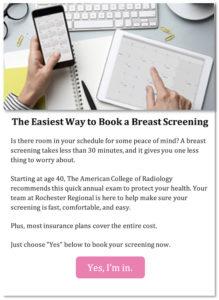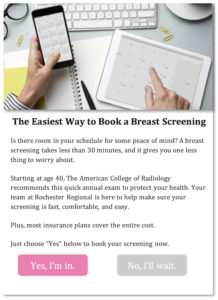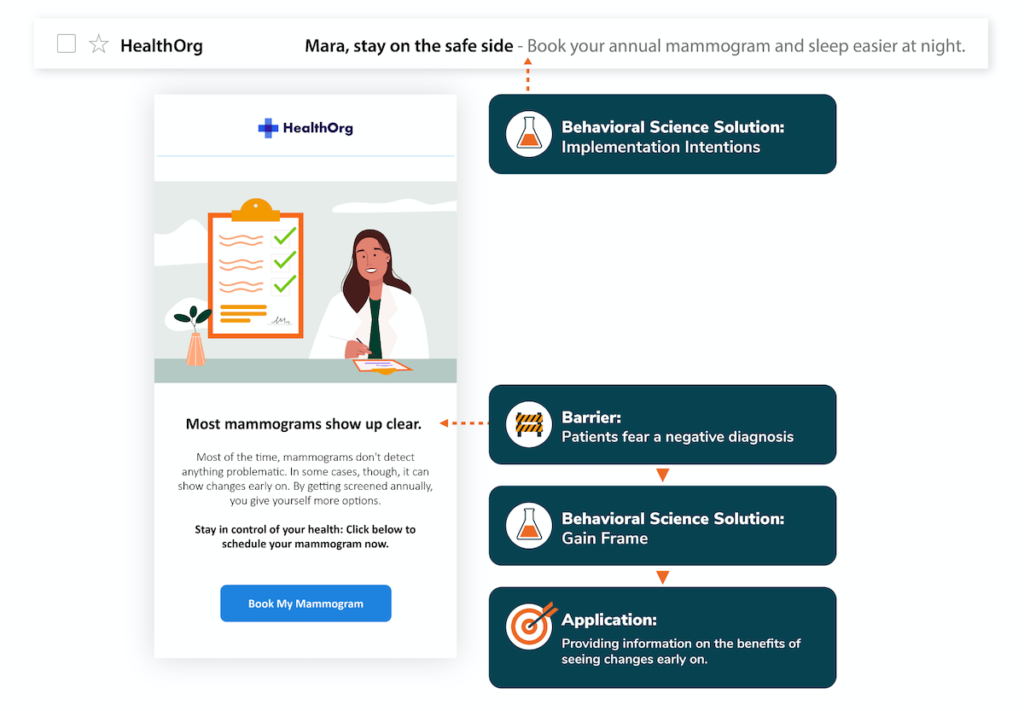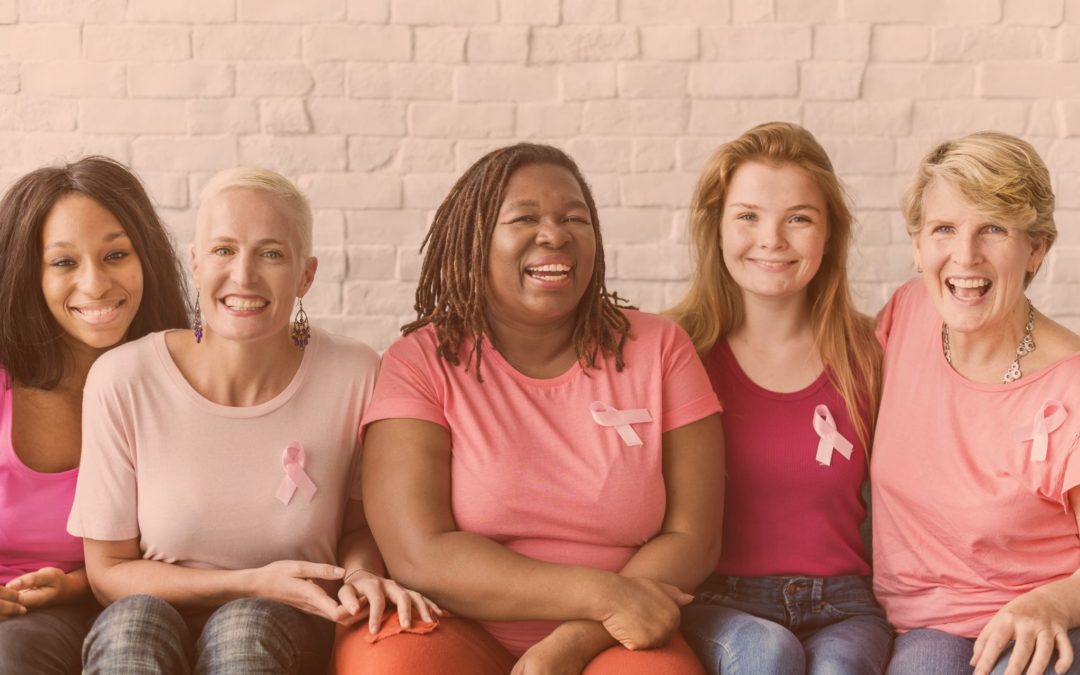During the last 20 years, both the risk factors (older average age at first pregnancy, alcohol consumption, obesity, less breastfeeding and physical activity) and breast cancer rates have increased in the U.S. By the end of 2020, 276,480 American women are expected to be diagnosed with breast cancer, costing on average 23.7$ billion in the first year diagnosed. The cost to the women themselves varies wildly depending on whether they have insurance and their type of insurance, from around $5,000 on employer-sponsored insurance to over $144,000 for the uninsured.
Early breast cancer detection saves lives and cost. The survivability rate of people diagnosed with Stage 0 or Stage 1 breast cancer is close to 100%. Diagnosing breast cancer in Stage 1 instead of Stage 4 saves an average of $52,561 in medical costs per woman in the first year after the diagnosis. Sadly, only one in five people diagnosed with Stage 4 breast cancer are still alive five years later.
Routine mammograms can detect cancer in earlier stages, helping to reduce the overall human and economic cost of breast cancer. Among women over 40 years of age and older, those women who have a mammogram every 1-2 years have a 40% lower breast cancer mortality compared to women who do not. Breast cancer screening is one of the most cost-effective clinical preventive services; however, 2 out of 3 women do not have a routine mammogram.
Behavioral Science Overcomes Barriers to Mammograms
Why doesn’t every woman get an annual mammogram?
The answer is that decision-making biases and behavioral barriers get the way. Many women are:
- Forgetful
- Too busy
- Misinformed
- Concerned about cost
- Under the belief that they are not at risk
- Afraid of a possible diagnosis
- Embarrassed to undergo the procedure
- Unaware of anyone who’s gotten a mammogram (i.e., no social proof)
- Fatalistic (i.e., due to the availability bias of a woman’s mother and grandmother having breast cancer, she believes it’s just a matter of time)
One barrier, omission bias, impacts all the above. It is the tendency to judge harmful actions as worse than equally harmful inactions. The format of traditional messages often creates this barrier. Eliminating it would improve engagement with efforts to overcome the other barriers.
A message reminding women to schedule a mammogram traditionally has a single button: “Yes, I’m in.” By clicking the button, women choose to both schedule an appointment AND experience all the downsides associated with a mammogram – inconvenience, embarrassment, physical discomfort, the risk of a positive or false positive result.

Example: Single Button Message
Women choosing not to schedule experience nothing. This inaction makes them feel less accountable for their choice. But what if there were two buttons—“Yes, I’m in,” and “No, I’ll wait”—and each choice was associated with an action?

Example: Two Button Message
The small design switch from a single button to two buttons now forces women to confront the implications of their choice. In addition, when choosing the “No I’ll wait” option, women are directed to a landing page and given the option to change their minds.
Lirio Precision Nudging™ Overcomes Barriers to Engagement
Addressing one barrier to mammography doesn’t solve the problem. It doesn’t address the other barriers to getting a mammogram, nor their application to some, but not all women. Moreover, it doesn’t address the dynamic nature of women whose lives, and therefore barriers, change over time.
Lirio’s behavior change AI brings together behavioral science solutions with AI technology to assemble and deliver Lirio Precision Nudging™ (i.e., hyper-personalized communication). Lirio Precision Nudging™ dynamically matches each behavioral science solution to each person within a population. The result: better engagement and behavioral outcomes, moving a population and the individuals within it along their unique journeys toward better health.
Lirio Precision Nudging™ helped a Lirio client improve patient engagement with scheduling mammograms, including the lift described above from addressing omission bias in their email communications. From discovery to program deployment, Lirio:
- Identified the full range of decision-making biases and behavioral barriers to scheduling and showing up to a mammogram
- Mapped behavioral science solutions to overcome identified barriers to getting a mammogram
- Used these solutions to inform message elements that when combined created more than 30,000 unique communications

As the project progressed, Lirio’s machine learning agent optimized and assembled the appropriate elements to create effective messaging to boost mammogram attendance. As the machine learning agent continued to learn, engagement with Lirio’s communications improved. After six months, Lirio’s Precision Nudging™ communications improved from an initial weekly email open rate of 16.3% to a weekly email open rate of 35.2%, and an average overall open rate of 26.1%, 1.3x the benchmark for healthcare email campaigns.
Lirio Precision Nudging™ was even more effective among high-risk, high-cost patients. For example, Lirio’s Precision Nudging™, which better met each woman where she was and solved for her particular barriers to getting a mammogram, was 19% more effective than a one-size-fits-all email for patients with commercial insurance and 48% more effective for patients with public insurance.
Compared to the one-size-fits-all email intended simply to remind women that they should obtain mammograms, Lirio Precision Nudging™ was more effective for Asian American (92% greater), Caucasian (23%), African American (19%), and Other race (45%) patients.
Getting women to a recommended mammogram advances individual as well as population health goals. Lirio’s purpose is to institute successful behavior change programs at scale that will have radical impacts on population health. The survivability of certain types of cancer, like breast cancer, depends on how early they are caught—clearly, earlier is better. We cannot eliminate breast cancer, but Lirio sees an opportunity to eliminate Stage 4 breast cancer diagnoses by increasing screening and therefore catching potential issues earlier. It all depends on successfully nudging women to get screened.
In one month, Lirio found 10.3% of women who scheduled their mammograms had initially clicked “No, I’ll wait,” but changed their mind on the landing page and scheduled a mammogram.
Watch Our Next Webinar
To learn more about Lirio’s Precision Nudging™ approach to generating scalable and sustained behavior change solutions for all aspects of your organization’s population, and how it moves people on their unique journey to better health, watch a replay of our recent webinar “Lirio Precision Nudging™: The Solution to Scalable Behavior Change.”
Follow Lirio on Facebook: Facebook.com/lirio.llc, LinkedIn: LinkedIn.com/company/lirio, and Twitter: @Lirio_LLC.
Other readers viewed:
Use Precision Nudging™ to Understand and Overcome Barriers to Women’s Health
How Health Systems Can Prioritize Employee Mental Well-being
